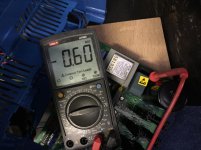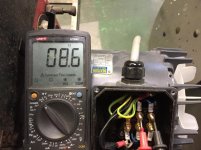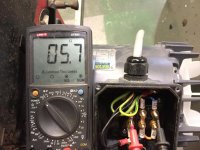Mouth
Plastic
- Joined
- Oct 12, 2017
- Location
- Nottingham
Hi all, I am VERY new to woodworking, I bought a used Myford lathe which was working just fine and I managed to turn my first bowl, towards the end of this the lathe would periodically not start. Then i've gone on to my next attempt and the lathe will no longer start.
When the direction is selected and the start button pushed, the motor moves slightly (10 degrees or so rotation) and makes a noise then stops. This is just repeatable by switching off and on again. Everything turns freely on both directions by hand.
The unit is driven from UK mains single phase voltage 240VAC into an inverter for 3 phase. The inverter unit itself is a Jaguar Cub VCD55 UK and has 2 LED indicators which had no label, so I opened the unit to investigate further/look for anything physically obvious and to check if there were labels on the LEDs inside. When first plugged in the LED labeled POWER illuminates and when the start button is pressed one of the 2 LEDs labelled TRIP illuminates. I don't have a manual for this unit and cannot find one online so i'm not sure the cause of the trip. All wiring checked out OK for connections and continuity.
Can anyone point me in the correct direction for further fault finding so that I can get it up and running again please!
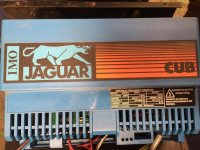


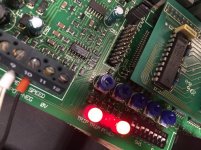

When the direction is selected and the start button pushed, the motor moves slightly (10 degrees or so rotation) and makes a noise then stops. This is just repeatable by switching off and on again. Everything turns freely on both directions by hand.
The unit is driven from UK mains single phase voltage 240VAC into an inverter for 3 phase. The inverter unit itself is a Jaguar Cub VCD55 UK and has 2 LED indicators which had no label, so I opened the unit to investigate further/look for anything physically obvious and to check if there were labels on the LEDs inside. When first plugged in the LED labeled POWER illuminates and when the start button is pressed one of the 2 LEDs labelled TRIP illuminates. I don't have a manual for this unit and cannot find one online so i'm not sure the cause of the trip. All wiring checked out OK for connections and continuity.
Can anyone point me in the correct direction for further fault finding so that I can get it up and running again please!











